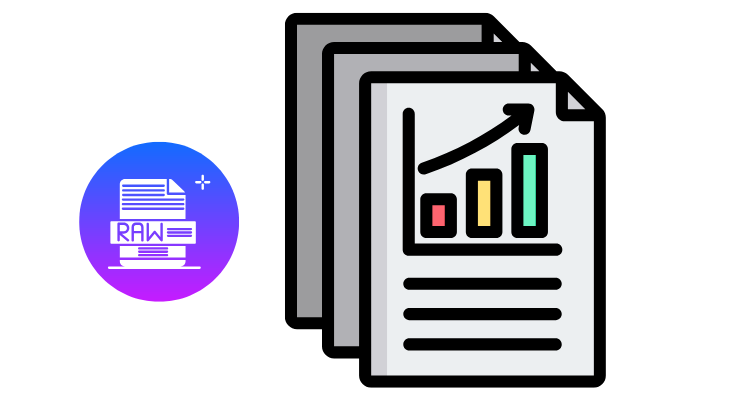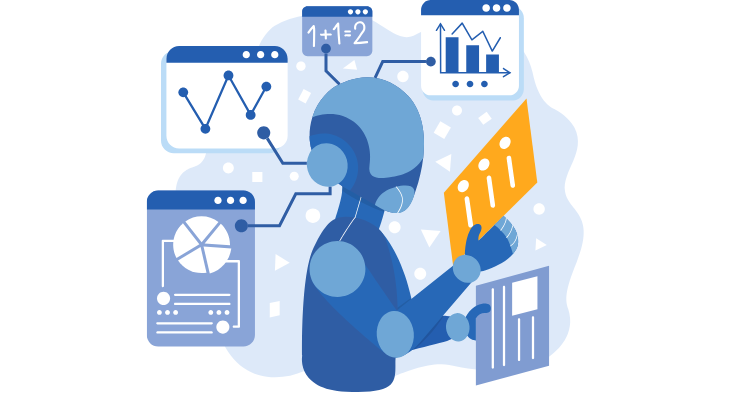Businesses sit on piles of raw data every day. But without the right tools or approach, that data often remains unused. You might feel stuck trying to make sense of messy spreadsheets, confusing numbers, or disconnected reports.
Sound familiar?
Here’s the good news: your data contains valuable insights. A study by Forbes revealed that companies using proper analytics are five times more likely to make smarter decisions.
This means better profits and fewer unpredictable guesses.
In this blog, you’ll learn how to turn disorder into clarity. From setting goals to analyzing trends, we will break it down step-by-step for you. Let’s make the complex simple together!

Table of Contents
ToggleKey Takeaways
- Companies using analytics tools are five times more likely to make more informed decisions, according to Forbes.
- Clear business objectives and organized data improve decision-making by reducing guesswork and errors.
- Advanced techniques like clustering, predictive analytics, and visual dashboards simplify complex datasets into insights.
- Artificial Intelligence (AI) expedites data analysis through Machine Learning (ML) for predictions and Natural Language Processing (NLP) for feedback analysis.
- Practical applications include immediate decision-making, predictive maintenance, and customized customer experiences that enhance efficiency and loyalty.
The Importance of Actionable Intelligence in Business
Turning raw data into something valuable creates opportunities. Information that drives decisions doesn’t come from cluttered spreadsheets but from well-structured insights. This knowledge helps you understand customer behavior, predict trends, and identify gaps in your strategies.
A clearer picture leads to better choices. For example, tracking sales patterns could show which products need more focus or marketing efforts. As Warren Buffett once said:.
Risk comes from not knowing what you’re doing.
Having the right facts at hand reduces guesswork and builds confidence in decision-making.
Steps to Transform Raw Data into Actionable Insights

Turning scattered data into meaningful insights doesn’t happen by accident. It requires a methodical approach that ensures clarity and focus.
Define clear business objectives
Clarify what your business aims to achieve. Identify specific goals, like increasing profit margins by 15% in the next quarter or reducing customer churn by 10%. Clear objectives guide data analysis and focus efforts on measurable outcomes.
Align these objectives with your company’s overall strategy. If resourcing is a barrier to pursuing larger analytics goals, Credibly’s business growth funding offers flexible financing options that support scalable technology initiatives. For instance, if growth is a priority, prioritize tracking sales trends or identifying new markets. Avoid vague targets.
Precise goals simplify processes and make decision-making easier later on.
Centralize, clean, and organize data
Defining objectives sets the stage, but disorganized data hinders progress. Businesses must organize their information into a unified system instead of managing scattered tools or platforms.
Integrating data minimizes errors and improves accessibility. If your internal systems need optimization or lack proper integration, Vigilant’s IT support and maintenance can help ensure smooth data workflows and minimize downtime across platforms.
Cleaning comes next. Eliminate duplicates, address gaps, and resolve inconsistencies in records to prevent misleading results. Proper organization allows teams to find what they need without losing time navigating through disarray.
Well-structured data results in clearer insights for confident decision-making.
Apply advanced data analysis techniques
Businesses can extract patterns and predictions using statistical analysis. Techniques like regression, clustering, or decision trees help identify trends hidden in raw data. For example, clustering segments customers by behavior enables customized marketing strategies.
Predictive analytics tools forecast future outcomes based on historical data. Retailers might use these tools to anticipate inventory needs during peak seasons. As Warren Buffett once said:.
Risk comes from not knowing what you’re doing.
Visualize data for clarity and understanding
Graphs and charts simplify numbers that seem overwhelming at first glance. For example, a bar chart can compare quarterly revenues across years, showing trends instantly. Such visuals turn complex datasets into easy-to-read insights for quicker decision-making.
Color coding in visual tools emphasizes key differences or patterns rapidly. A heatmap, for instance, identifies areas needing attention by displaying performance variations through shades of color.
These techniques save time while reducing the chances of misinterpretation.
Interactive dashboards allow users to examine data further without cluttering reports with extra details upfront. You can click on a region in a sales map or filter customer categories to focus on specific groups instantly.
Visualizing information not only enhances understanding but also accelerates the execution of plans effectively.
Role of Artificial Intelligence in Data Transformation

Artificial Intelligence processes extensive data sets more quickly than humans ever could. It detects patterns and trends that often go unnoticed.
Machine Learning for Predictive Insights
Machine learning examines historical patterns in data to anticipate future trends. It enables businesses to anticipate customer actions, shifts in the market, and potential operational risks.
For instance, a retailer can apply predictive analytics to prepare inventory in advance for increased demand during holidays.
Algorithms handle substantial amounts of information more efficiently than conventional methods. They reveal unnoticed opportunities while minimizing uncertainty in decision-making.
With precise insights, companies make more informed decisions that conserve time and resources.
Natural Language Processing for Contextual Understanding
Natural Language Processing (NLP) helps businesses comprehend text, speech, and patterns within language data. It examines customer feedback, emails, or social media comments to identify trends and concerns.
Businesses can then determine the context of what customers want or need.
NLP-based tools simplify complex data into manageable insights. These tools recognize emotional tones in reviews, extract key topics from surveys, or organize unstructured information.
Companies use this to enhance operations or improve services based on clear communication insights.
Real-World Applications of Actionable Intelligence
Businesses today work with data like a sculptor molds clay, shaping strategies with precision. This approach transforms numbers into practical solutions for complex challenges.
Real-time decision-making
Real-time decision-making allows businesses to adapt extremely quickly. Picture customers leaving their carts in an online store. A system driven by data analytics recognizes this trend immediately.
It might highlight inventory problems, pricing challenges, or even an issue in the checkout process. Swift actions prevent more revenue loss and maintain smooth operations.
Examining streaming data aids in improving strategies in real-time. For instance, a retailer can observe live sales during busy hours to modify staffing levels. Predictive analytics strengthens these decisions by anticipating future demand trends.
Rapid responses like these safeguard profits and enhance overall efficiency without delays hindering progress.
Predictive maintenance
Smart businesses use predictive maintenance to address issues before they interrupt operations. Machines and systems produce significant data during their everyday usage. Using this data, companies can find patterns that indicate potential failures.
Addressing a problem before it happens reduces repair expenses and prevents downtime.
Predictive analytics tools are essential in tracking equipment health. For instance, sensors on manufacturing machines detect abnormal vibrations or overheating in advance. This anticipation enhances operational efficiency and avoids expensive interruptions.
Advanced technologies like machine learning improve these predictions by analyzing large datasets more efficiently than humans ever could.
– Improving customer experiences
Enhancing customer experiences
Personalized recommendations enhance customer satisfaction. Data analytics supports businesses in understanding buying patterns, preferences, and challenges. For instance, predictive algorithms can propose products based on previous purchases.
This fosters loyalty and encourages repeat sales.
Thorough insights into customer behavior enhance service quality. Businesses use data visualization tools to identify trends in feedback or complaints promptly. Addressing issues early reduces churn while strengthening long-term relationships with clients.
Conclusion
Turning business data into intelligence is like finding gold in a mine. It takes effort, but the rewards are worth it. Clean data and smart tools help you see patterns that drive better choices.
Start small, stay focused, and let insights guide your moves. Your decisions will get sharper, faster, and more effective every step of the way.









